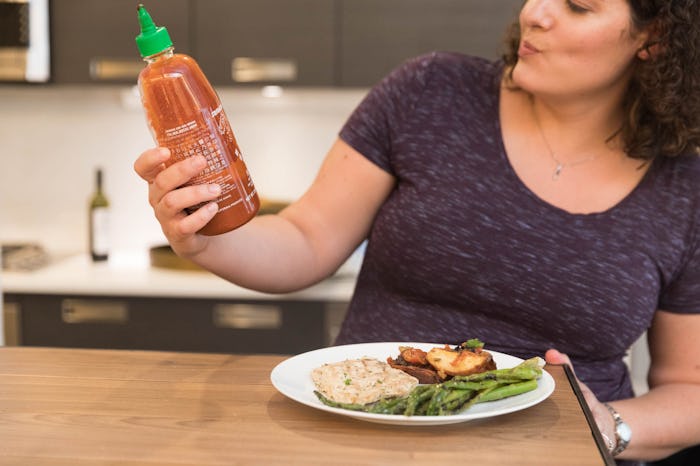Life
The Fastest Ways To Induce Labor, According To Experts
When my sister and I were young children, we often cuddled up in bed with my mom at night to tell stories and sing songs. On one particular evening, one of us prompted a conversation — probably my sister — about what it was like “in mommy’s belly.” Being silly, my mom asked us what we were thinking when we were in there. I giggled, but my sister quickly exclaimed, “I was thinking, ‘I wanna get outta here!’” We laughed, but the truth is the adult version of her sentiment — “What’s the fastest way to induce labor?” — is one of many expectant mothers. But experts say it’s important to proceed with caution.
“When starting spontaneously, birth involves a very complex series of events with each one setting off the next,” Carley Mendes, a registered holistic nutritionist, childbirth educator, and expert at The Tot, tells Romper in an email interview. “Any medicine, herb, or technique used to begin birth before the body and/or baby is ready can have unwanted effects and disrupt the delicate cascade of physical changes that happen during labor. Once you stimulate labor either naturally or medically, the potential for further interventions or complications increases.”
Mendes says, however, that there are some safe ways to stimulate labor when a baby is full term, including walking, squatting, and climbing stairs to “move your hips and encourage your baby to descend.” Sex is also helpful in encouraging labor because, as Mendes so aptly puts it, “they say that sex puts a baby in and sex gets a baby out."
“The prostaglandins in semen can help to prepare the cervix and the female orgasm can softly stimulate the uterus,” she says. “But this is only safe if the waters have not broken yet.” Mendes says nipple stimulation might also encourage labor, as it releases the hormone oxytocin which can help stimulate contractions.
“Additionally, sex at full term can be a good laugh and hopefully serve to relax you,” she adds.
According to Mendes, acupuncture and herbal inductions, like black and blue cohosh, are also popular methods, but powerful. "They should be used with caution," she says. "They may cause labor to intensify very quickly, and have been shown to increase the likelihood of an epidural and/or cesarean section."
Other methods include castor and evening primrose oils, as well as mechanical inductions and membrane sweeps, but they come with a list of warnings ranging from diarrhea to premature rupture of the membranes to the need for further methods of induction.
Acupressure can also prove to be successful at ushering in contractions. Josie Bouchier, a Colorado-based acupuncturist and women’s holistic health expert at Tot who created the Pregnant Woman program, tells Romper in an email interview that you can also try vigorous shoulder rubs at the top of the trapezius muscle and foot massages, as well as massaging less likely spots, like the area between your thumb and forefinger.
Of course, conventional methods of induction, like Pitocin or Cervidil, which helps your cervix to open, are available, too. But both must be administered by a healthcare practitioner. Some women also swear that certain foods, like hot sauce and pineapple, triggered their contractions. As with any decision you make about the arrival of your little one, just make sure you consult your doctor, no matter how much you — or they if they're anything like my sister — are ready to get the show on the road.
Check out Romper's new video series, Romper's Doula Diaries:
